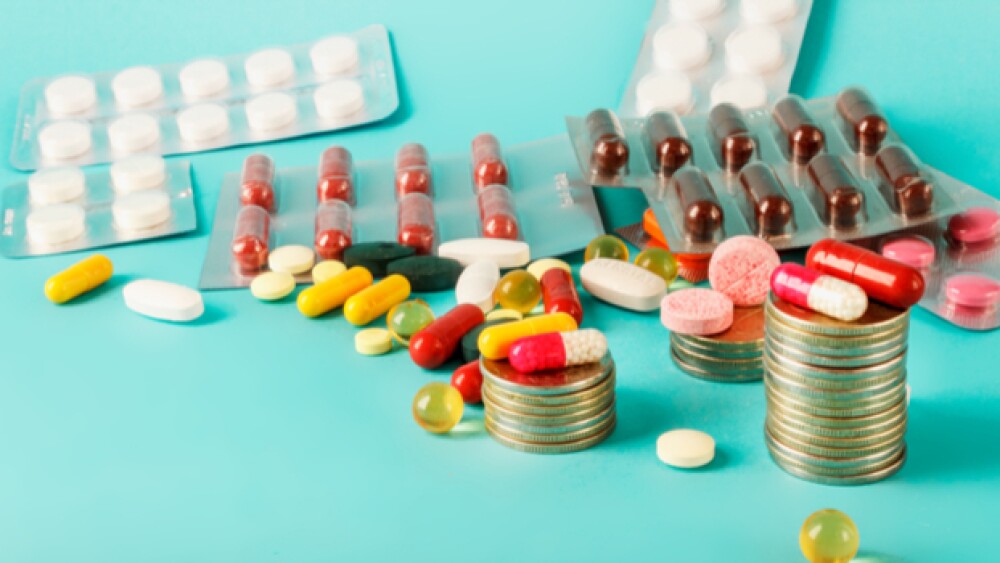Researchers at the Center for Medicine and Media at The Dartmouth Institute for Health Policy and Clinical Practice just published an analysis of healthcare marketing from 1997 to 2016.
Researchers at the Center for Medicine and Media at The Dartmouth Institute for Health Policy and Clinical Practice just published an analysis of healthcare marketing from 1997 to 2016. With a healthcare market of $3.5 trillion, they found that spending on marketing had climbed to $30 billion a year. The study was published in the journal JAMA.
When the subject of drug pricing comes up, the industry is usually quick to point out that it costs closes to $1 billion or more to bring a drug to market, and that only about one in 10 drugs in development actually make it to market. Critics typically follow up with the statement that much of that money spent on development is actually marketing.
The study found that from 1997 to 2016, health care marketing nearly doubled. “Marketing drives more testing,” stated Steven Woloshin, co-director of the Center for Medicine and Media and author of the study. “It drives more treatments. It’s a big part of why health care is so expensive, because it’s the fancy, high-tech stuff things that get marketed.”
Less clear is whether this is unusual. For a market that is $3.5 trillion, $30 billion in annual marketing may not be that large. For example, in 2017, according to AdAge, U.S. automotive marketing spending was about $35 billion per year. U.S. car sales in 2018 were about $138 billion. Although this might seem like comparing apples to go-karts and looking at sales and marketing figures for an industry that is extremely international in structure is fuzzy at best, a significantly higher percentage of automotive money goes into marketing than the healthcare industry does, compared to their market sizes.
Nonetheless, Shannon Brownlee, senior vice president of the Lown Institute, a Brookline, Mass., nonprofit that promotes affordable care, told Kaiser Health News, “Whenever pharma or a hospital spends money on advertising, we the patients pay for it—through higher prices for drugs and hospital services. Marketing is built into the cost of care.”
Unlike the automotive industry, where marketing is largely aimed at consumers, much of drug marketing is aimed at physicians, although plenty is focused on consumers. Pharma companies send sales representatives to doctors’ offices, offer food and beverages, speaking fees, and pay them to travel to conferences and speak about their products.
The study found that the biggest increase in medical marketing over the last 20 years was direct-to-consumer advertising. Spending on those TV ads climbed from $2.1 billion in 1997 to almost $10 billion in 2016.
Holly Campbell, a spokesperson for the pharmaceutical industry group, PhRMA, told Kaiser Health News that the ads provide “scientifically accurate information to patients” and “increase awareness of the benefits and risks of new medicines and encourage appropriate use of medicines.”
That sounds like it was spoken from a defensive crouch, something the pharma industry tends to be in when the topic of drug pricing and marketing spending arises, as if sales and marketing is somehow not a legitimate business expense.
One area that has risen dramatically is marketing for at-home genetic testing. The study notes that the ads for genetic testing grew from 14,100 in 1997 to 255,300 in 2016, at a cost in 2016 of $82.6 million. AncestryDNA spent more than most, $38 million in 2016 alone. Since those are consumer testing, often with a “novelty” or “entertainment” component, as opposed to healthcare testing, it’s not completely clear how that falls under the category of “health care testing.” Perhaps most surprising is that in 1997, years before this type of direct-to-consumer genetic testing became technically feasible, there were 14,100 ads for genetic testing.
The consumer-focused marketing category also includes marketing for hospitals, which in 2016 had risen to $3 billion.
The study, however, does point out that only the U.S. and New Zealand allow for prescription drug advertising. From 1997 to 2016, in the U.S., those ads rose from $1 billion and 79,000 ads to $6 billion and 5 million ads.





